Editor’s Note:
Hey Foundry Fam,
April disappeared in a blur. It was one of those months that had a bit of everything. Some tricky client projects that tested my patience, a few late nights I didn’t plan for, and one big win that honestly made all the chaos worth it. It definitely wasn’t all smooth sailing, but even with the ups and downs, there was a real sense of progress by the end.
This edition feels a lot like sitting down with a friend after a crazy month. Nothing too polished. Just the honest moments, the things that made me stop and think, and a few that made me roll my eyes.
From branding that was genuinely inspiring to the messiness of AI debates, these are the conversations I’ve been having with myself (and a few others) lately. If you’ve been feeling a bit stretched or scattered too, I hope this makes you feel a little less alone.
Let’s get into it.
What you can expect in this edition:
A brand identity so intentional, it stopped me in my tracks
The Studio Ghibli AI filter that set the internet (and creatives) off
Why the action figure trend lost its magic, and what replaced it
A bold WWF campaign that raised eyebrows for all the right (and wrong) reasons
The hidden cost of Gen AI (spoiler: it’s water)
Adobe says goodbye to DEI targets, and the creative community’s response
A quick design insight that’s worth keeping in your back pocket
A featured artist whose work captures memory and emotion
A creative challenge to reconnect with what makes your work yours
The Edit: April Highlights
Brand Project Spotlight: Base Design x 12 Matcha
BaseNYC created an identity for 12 Matcha that isn’t just inspired by matcha. It feels like it. You can see the thoughtfulness in every part of it, from the textures to the gradients. The whole concept is built around the idea of finely ground particles, capturing the essence of matcha through movement and subtle details. It’s clever, quiet, and still somehow bold. Not just a beautiful brand, but one that’s rooted in process, purpose, and story. So much branding today feels rushed or purely aesthetic. This one had intention behind every detail, and you can really feel the difference. I couldn’t stop thinking about it after I saw it.
Trending: April’s Big Design Debates
Studio Ghibli-Style AI Art Sets Off a Storm
One of the big viral moments in April was the Studio Ghibli AI filter. Everyone and their cat was turning selfies into Ghibli-style characters. It was everywhere.
The reactions were wild: some people thought it was adorable, others were completely offended and said it disrespected Miyazaki’s legacy, and a few were just confused why anyone cared so much.
I can honestly get both sides. It’s fun to play with new tech, especially when it’s creative. But there’s also something uncomfortable about reducing decades of rich storytelling and cultural meaning to a trendy filter.
Here’s what made me pause:
You can legally copy a style. Style itself isn’t copyrightable
But ethically, it gets messy. Especially when the original creator (Miyazaki) is very much alive, vocal, and famously not a fan of AI
Plus, most people didn’t read the fine print. Those selfies? They might be stored, used, and analyzed to train more AI models
And let’s not forget metadata. Uploading a pic can reveal your location, the time it was taken, and more
I’ll admit it. I turned myself into a Muppet. Not Ghibli, but close enough. It was fun.
But knowing what I know now, I’m way more cautious. The creative play is cool, but it’s important to stay aware of what we’re trading for the novelty.
Action Figure Starter Packs
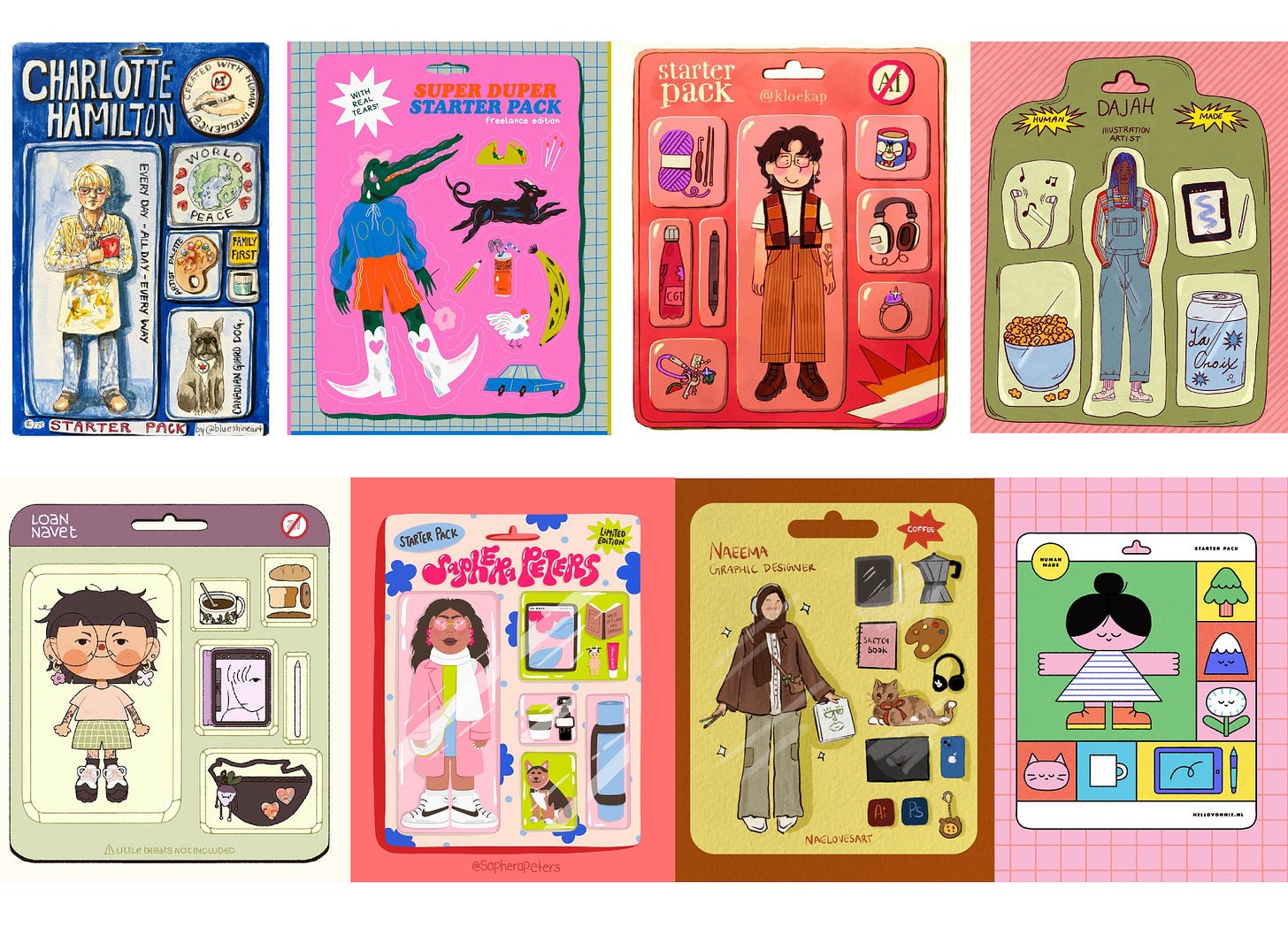
I’m going to be very real here… I loved the action figure trend at first. I made my own, had a laugh, even animated it with Pixverse.ai just for fun. It felt playful and harmless. But after a few days, it was everywhere. Every scroll showed the same format, same poses, same slightly glossy aesthetic. It lost its charm pretty quickly.
What stuck with me weren’t the AI-generated ones. It was the artists and illustrators who created their own from scratch. They didn’t follow the trend, but they brought something completely different. Their takes were expressive, unexpected, and full of personality. You could tell a real person made them.
That felt important. Especially now, when so many creatives are worried AI might replace them. And honestly, I’ve felt that fear creep in too. But seeing those hand-drawn posts reminded me of why I started creating in the first place. It wasn’t about perfection, it was about expression. About connecting with people in a real, emotional way. This was a reminder that human-made art isn’t a thing of the past. It’s still deeply relevant. Still needed. Still the thing that moves us. AI can mimic, but it can’t create with feeling. That’s the part only humans bring.
This trend reminded me why I started creating in the first place, and why human creativity is irreplaceable.
If you’ve created your own illustrated starter pack, feel free to share. I’d love to see it!
WWF x AI: The Hidden Cost Campaign
WWF Denmark’s latest campaign really made me pause. The visuals got my attention, but it was the message that really stuck with me. Created by Nikolaj Lykke Viborg using AI, it shows how things we use every day, like food, makeup, and clothes, are linked to the destruction of animal habitats.
It’s called "The Hidden Cost."
And that phrase says it all:
The hidden cost of convenience
The hidden cost of consumerism
And now, the hidden cost of generative AI
What made this campaign even more controversial was the fact that it was created using AI. And that sparked a whole new wave of conversation. Some people questioned how you can call out the damage of consumerism while also using a tool that carries its own hidden cost.
It’s complicated. The visuals were striking, and the message was strong, but the medium left people questioning the integrity of it. Can you really highlight environmental damage while contributing to it in the process?
For me, it just reinforced how messy and imperfect this conversation around AI and sustainability really is. Some campaigns aren’t meant to feel comfortable. And maybe that’s the point.
The Hidden Cost of Gen AI: Water
We hear a lot about AI’s carbon footprint and energy use. But there’s another cost that doesn’t get enough attention: water.
Here’s what that actually looks like:
Training GPT-3 may have used up to 700,000 liters of fresh water
One single AI-generated image can use the same amount of water as a 500ml bottle
A basic chat session might use two to four glasses of water per prompt
That water isn’t being used by the AI itself. It’s used to cool down the servers working behind the scenes. Most big data centers rely on evaporative cooling systems that consume large amounts of clean water just to keep machines running.
OpenAI has publicly stated that they are working with Microsoft to improve the environmental sustainability of their data centers, including efforts to reduce water and energy use. That’s promising. But with climate change and water shortages already affecting millions, people are starting to ask harder questions.
Ethical AI is no longer just about data privacy and bias. It’s also about sustainability. And honestly, learning about the water usage behind AI made me take a step back. I use these tools every day in my work, sometimes without thinking twice. But now I’m being more mindful about when and how I use them. If we’re going to keep creating with AI, we owe it to ourselves, and the planet, to understand what it really costs and make more conscious choices.
Quick Design Insight:
Just because a tool is available doesn’t mean you have to use it. Use what actually serves your creative vision. Leave the rest.
Adobe for Some: Adobe Drops DEI Hiring Goals
At an internal all-hands meeting, Adobe’s Chief People Officer, Gloria Chen, told staff that the company will no longer be setting diversity, equity, and inclusion hiring goals - what they had internally called their "Aspirational Goals."
The official statement:
“We will discontinue the practice of setting aspirational representation goals while continuing our focus on fair and consistent hiring practices.”
These goals were introduced back in 2020, aiming to boost leadership representation of women, underrepresented minorities, and Black employees by 2025. Hearing this shift from Chen, who is herself both a woman and a person of colour, felt especially layered. Some in the design and tech community noted the irony, and many believe she may have directly benefited from the very initiatives now being dropped.
Adobe has stated that it remains committed to "fair and consistent hiring practices." But for many inside and outside the company, the decision to remove measurable goals felt like a step backward. While the commitment sounds good in theory, people are questioning how fairness can be meaningfully upheld without clear benchmarks. Without targets, it's harder to track progress or hold leadership accountable. Something that structured DEI goals were designed to do.
Screenshots from internal Slack messages showed just how hurt employees were:
“Adobe’s unique culture of embracing different perspectives, called Adobe for All, now seems lost.” “It’s heartbreaking.”
Outside Adobe, the reaction was just as strong. Some creatives called it tone-deaf. Others said this, combined with Adobe’s sky-high subscription prices, was the final push they needed to move to Affinity.
It’s raised real questions. Removing measurable goals around diversity might sound fair on paper, but for many people, it feels like a step backward. Without real targets, the promise of "Adobe for All" starts to feel hollow. True equity needs more than good intentions—it needs action and accountability. And right now, a lot of creatives are questioning whether Adobe is still serious about either.
Femme Foundry Recommends:
Female artist you should know: Angela Seear

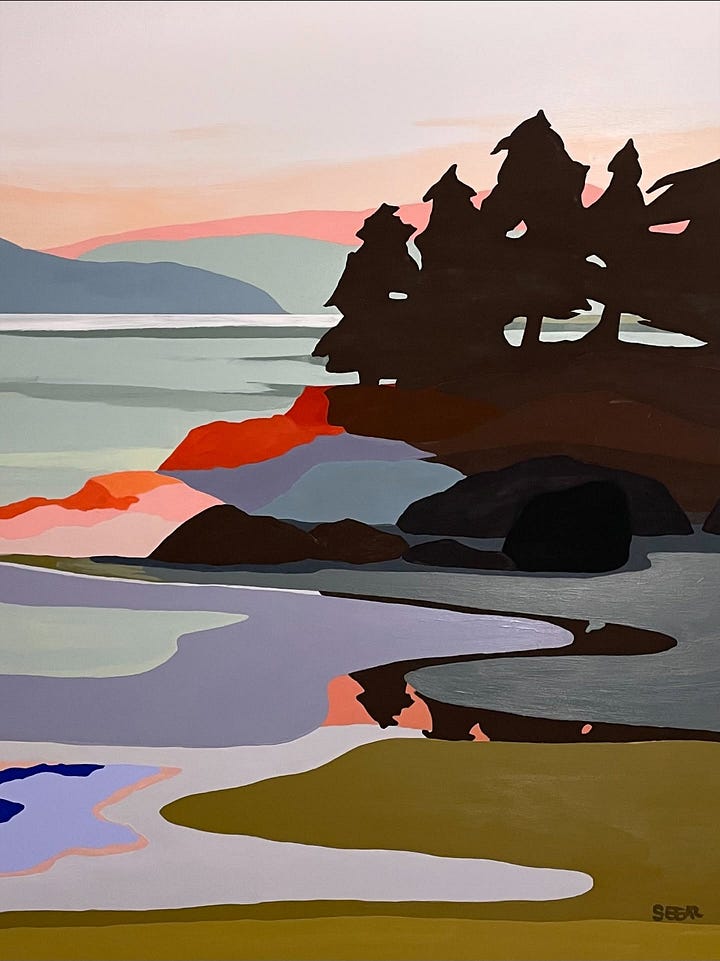
Angela is a Vancouver-based artist whose work I’ve been drawn to for a while now. She creates layered, emotive landscapes, and her use of colour and texture gives each piece this quiet intensity that really sticks with you. Her work is beautiful and thoughtful. Go check her out. She’s incredibly talented, and also just a lovely human.
Socials: @angelaseear_artist
If you have a favorite female artist more people should know about, send them my way. I’d love to feature more creatives in future editions.
Creative Challenge
Create a piece of art without AI.
No prompts. No automation. Just you, your tools, and your creativity.
Tag me on socials or post it in the chat if you want to share. I would love to see what you create.
That’s a wrap.
Thank you for being here! If something in this issue made you stop and think, even for a second, I’d love to hear about it. Feel free to hit the heart, share it with a friend, or reply and tell me what stuck with you. This space is all about real conversations, staying curious, and growing together.
See you next month, gorgeous humans!
Tracy xx



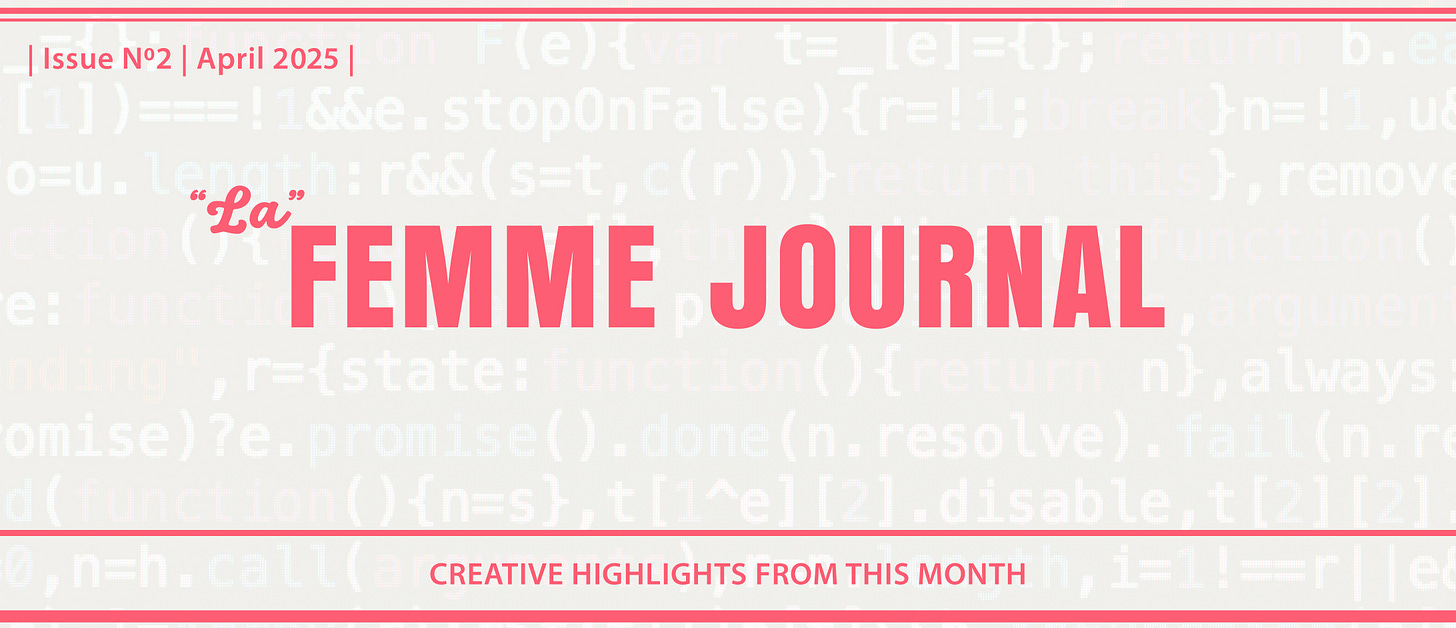

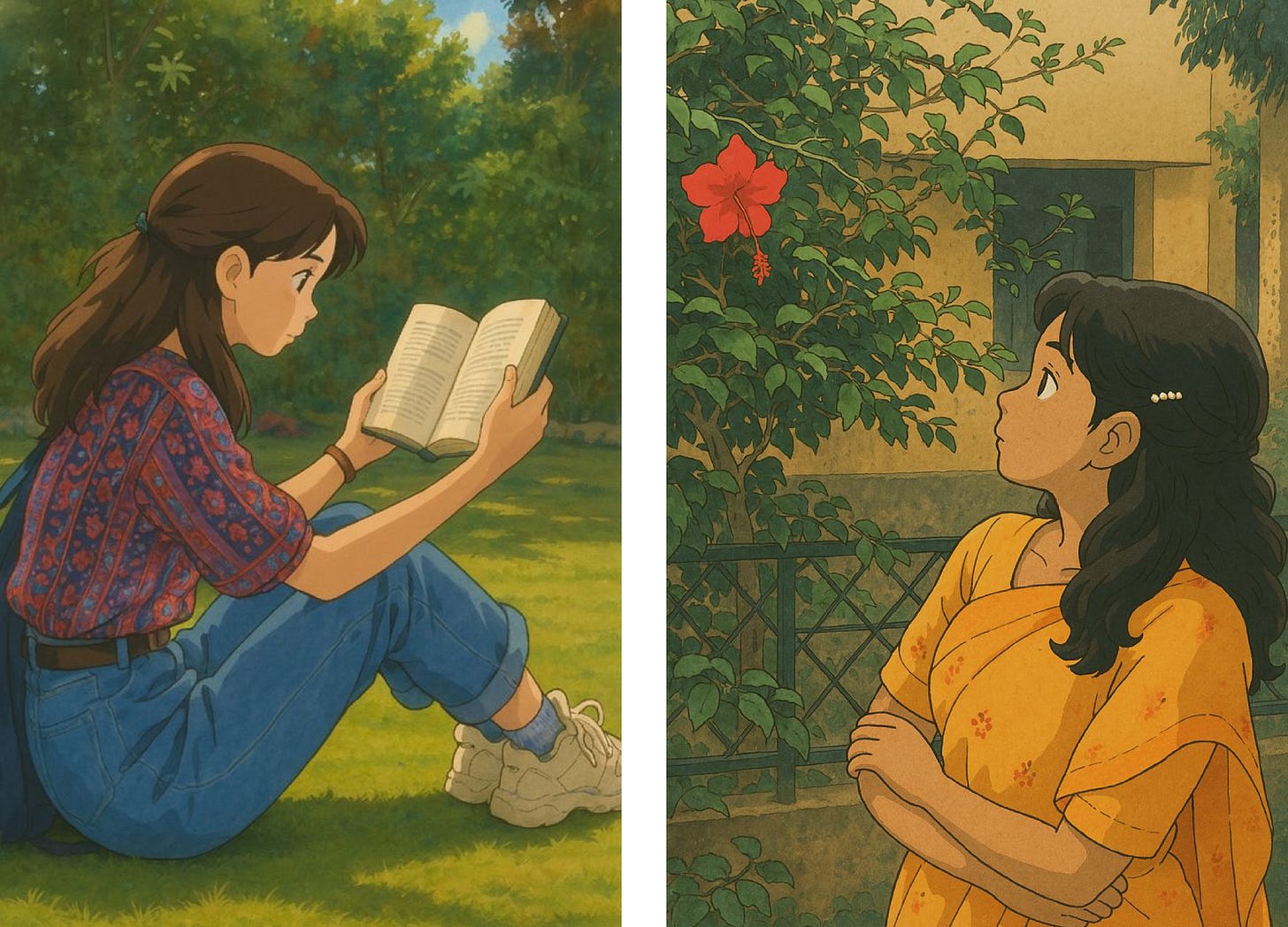

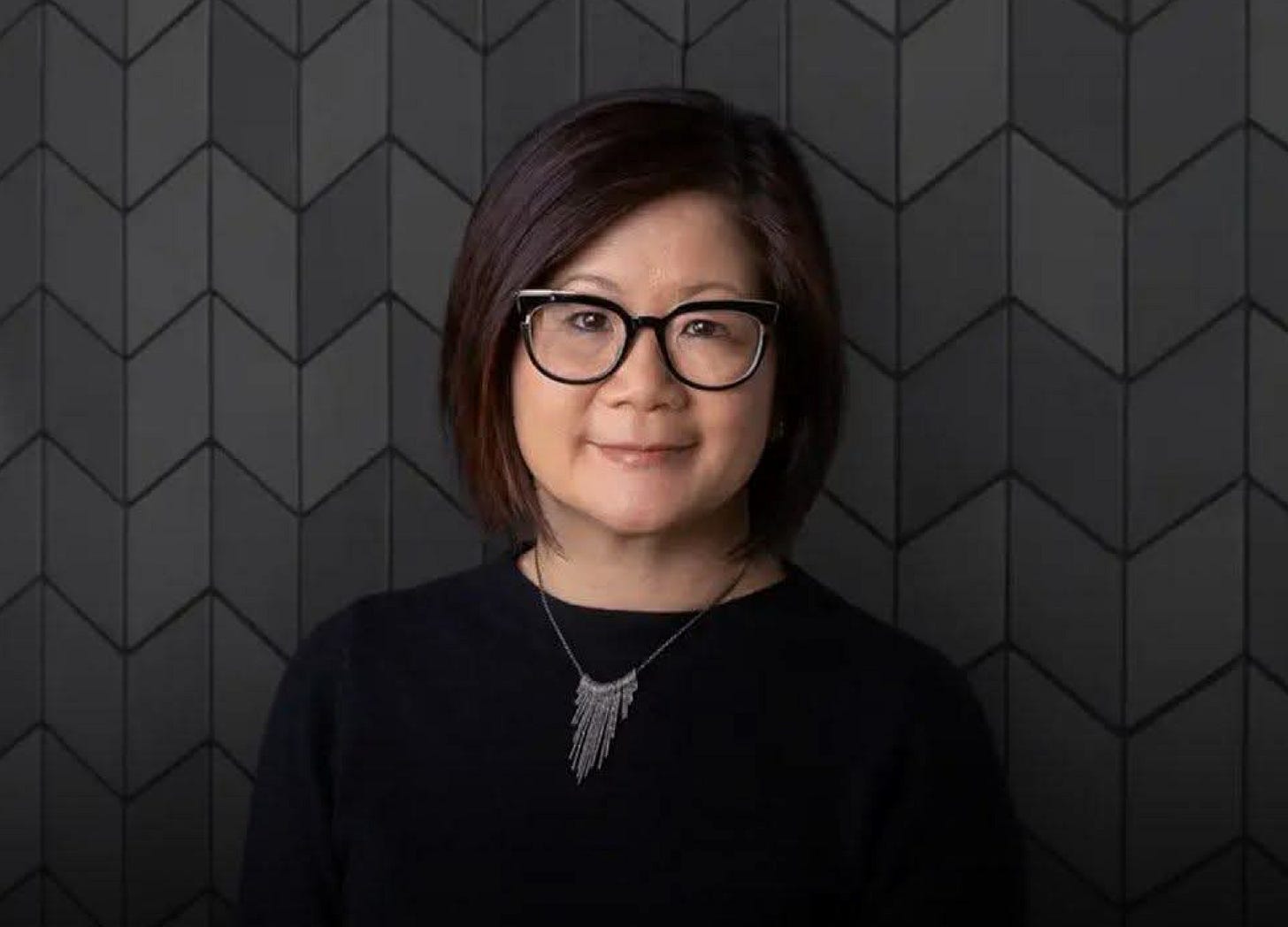
Thank you, I really enjoyed taking a look through her website. :)